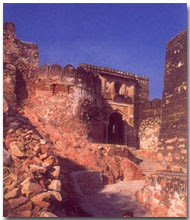
श्री सुंधा माताजी

Sundha Mata temple is about 900 years old temple of Mother goddess situated on a hilltop called 'Sundha', located at Longitude 72.367°E and Latitude 24.833°N, in Jalore District of Rajasthan. It is 64 km from Mount Abu and 20 km from the town of Bhinmal.
Tanot Mata Temple, about 180 Kms from Jaisalmer near Pak Border. Tannot Mata is a temple in western State of Rajasthan in District Jaisalmer of India. The Village is close to border with Pakistan and is very close to the battle site of Longewala of Indo-Pakistani War of 1971.
Sundha Mata temple is about 900 years old temple of Mother goddess situated on a hilltop called 'Sundha', located at Longitude 72.367°E and Latitude 24.833°N, in Jalore District of Rajasthan. It is 64 km from Mount Abu and 20 km from the town of Bhinmal.
Sundha Mata temple is about 900 years old temple of Mother goddess situated on a hilltop called 'Sundha'.
PGo to Blogger edit html and find these sentences.Now replace these sentences with your own descriptions.This theme is Bloggerized by Lasantha Bandara - Premiumbloggertemplates.com.



